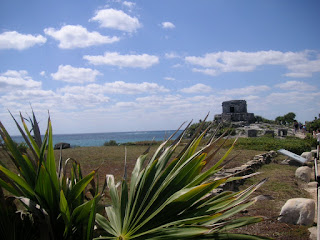


The road to Dolores Hidalgo winds up from Guanajuato and through a beautiful mountain range. The mountains are green with flashes of copper, covered with deciduous trees that remind me of scrub oaks, but bigger. At points on the high road you can see all the way out to the plain to the north. It is spacious and wonderful. The drive is about an hour to Dolores Hidalgo, because of the twisting road (with no shoulder) and the compulsion to take in the view while also watching out for the occasional cow or burro loaded with sticks.
As the road rises out of the mountains to flat ground, there sits Dolores Hidalgo - the epicenter of this year's bicentennial independence celebration in México. This is where the priest Miguel Hidalgo organized the indigenous and criollo peoples against the oppression of the Spanish aristocracy and imperialism. On the dawn of September 16, 1810, Hidalgo rang the bell in the parish church, la Parroquia de Nuestra Señora de los Dolores, and gave the cry for independence. Then he and his group of followers began the march to Guanajuato, where they would engage in their first battle at Alhóndiga.
The parish church, completed in 1778, has a beautiful detailed stone facade, and inside are impressive retablos carved in wood. The church sits in front of a pretty and tranquil plaza, of course. At the center is a statue of Hidalgo, and all around are lovely trees, including a glorious jacaranda bursting with purple blossoms. All through the plaza and streets, people stroll and sit on benches eating ice cream. Dolores Hidalgo is famous for unusual ice cream flavors, such as avocado, corn, and tequila. Mark and I were conservative with our ice cream choices this day; however, halfway through my ice cream cone, I realized that nuez, which I knew was some kind of nut, is actually walnut, to which I am allergic. Alas, next time I will try avocado.























